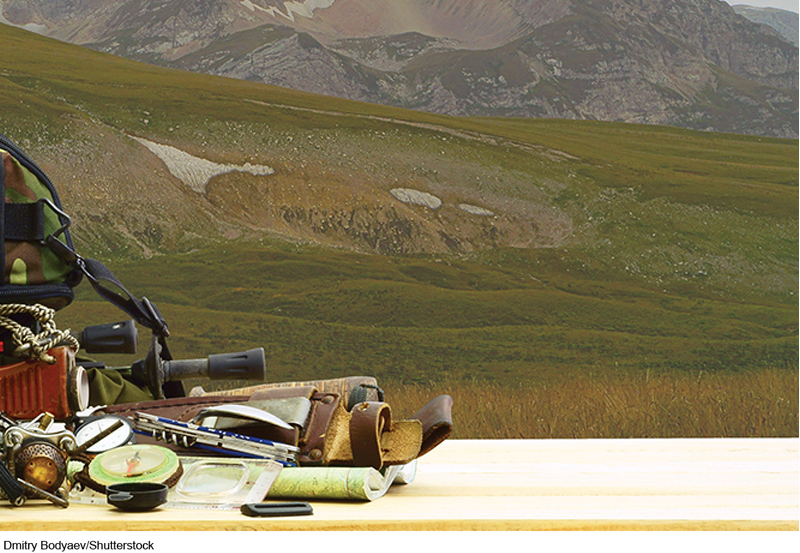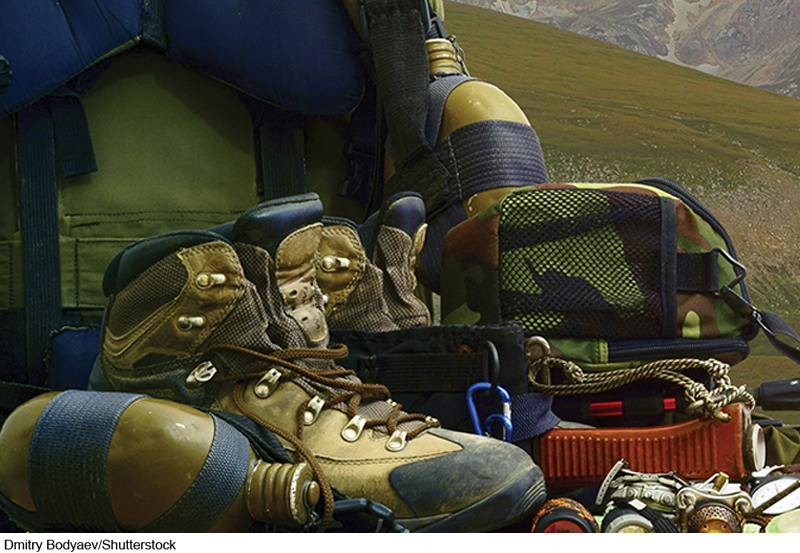Chapter Introduction
8
Motivation and Emotion

ONE STEP, ONE BREATH
PROLOGUE
A STEEP STAIRCASE HEWN OUT OF solid rock, the trail seemed to rise straight up the Himalayan mountainside. To the left, the canyon walls dripped with moisture. To the right, the trail dropped sharply to the roaring Budhi Gandaki river hundreds of feet below. The rocky trail was coated with mud, and in some spots, fast-
Dismayed, your author Sandy gazed up the trail. Her jacket and hiking boots were soaked through. Her wet hair was matted to her forehead. And she was tired from long days of trekking through rain, mud, and sleet. But there was no way back. The only option was to go forward.
“What am I doing here?” she said out loud. Sandy thought about the previous weeks. It was her second trip to Nepal as a non-
Many of Sandy’s friends thought she was crazy to spend her vacation making this strenuous trek. But Sandy is never happier than when she is on a hiking trail, the more remote the better. On her last trip to Nepal, the weather was perfect for the rigorous trails. But this trek was to be different.
For several days it had rained, soaking through “waterproof” duffels and raingear purchased in the States, no match for a Himalayan deluge. Determined, Sandy and her group had trekked on, despite their discomfort and fatigue. Clinics were scheduled and villagers waiting.

MYTH OR SCIENCE?
Is it true . . .

That obesity is primarily due to genetics?
That people are either homosexual or heterosexual?
That people need to satisfy basic needs before they can try to achieve higher needs, like artistic expression?
That women are more emotional than men?
That polygraphs, or lie detector tests, are a valid way to detect lying?
That facial expressions, such as smiles, are learned and vary from one culture to another?
That if you “put on a happy face,” you will actually feel happier?
Guides reassured the group that the rain would dissipate once higher, drier altitudes were reached. And for a few days, sunny weather allowed clothes, tents, boots, and sleeping bags to dry out. Moods lifted with the clouds, as clear skies revealed that these deep valleys were surrounded by stunning, snow-
The last clinic was held in the stone buildings of a school in Samagaon, near Nepal’s border with Tibet. Even at 12,000 feet, the village is dwarfed by the still higher peaks that surround it. Villagers began lining up at dawn—
But the next day brought more rain. Unable to go forward over a high pass as planned, the volunteers had to retrace their steps, covering rapidly in four days what was originally covered in seven. The trails were even more treacherous, some nearly washed out by landslides. Falling rocks and unstable ground added to the danger. The volunteers pushed on, overcoming their apprehension and even fear as sherpas warned of falling rocks and trails crumbled beneath their feet.

Although no steeper than many previous stretches, this particular staircase was especially daunting. The trail was narrow and slippery, the river below running fast and loud. “I’ll never make it,” Sandy thought. From halfway up the trail, Pasang, a guide and translator, called encouragement: “Come, we must hurry! You can do it!”
Pasang is an experienced mountain climber who had already summited Everest. And, she was the first Nepali woman to earn an international mountain climbing guide certification from a prestigious climbing school in France, no mean feat for a young woman from a small village in the Khumbu region near Everest. Sandy remembered Pasang’s advice. “Never look at the top! If you do, you will lose heart. Just look two steps ahead, and the way will be easy. One step at a time.”
“One step, one breath, at a time,” Sandy said out loud, and thought about the dozens of similar trails they’d already climbed in the previous weeks. Carefully, the group worked their way up the staircase, testing wet rocks with trekking poles to make sure they were stable, helping one another cross rushing water that was sometimes ankle-
Sandy topped the staircase with relief. But from the short stretch of level ground, she saw the next section of trail winding even more steeply up the mountainside. For a moment, her courage faltered. The sun was already beginning to set behind the canyon walls. Giving up was not an option. She could make it. She would make it.
Why would people leave their comfortable homes to travel to a remote part of the world as volunteers? And what kept them going despite fear and fatigue? These are the types of questions that we’ll cover in this chapter in our exploration of the two closely linked topics, motivation and emotion. And as we do, we’ll tell you more about Sandy’s adventure.